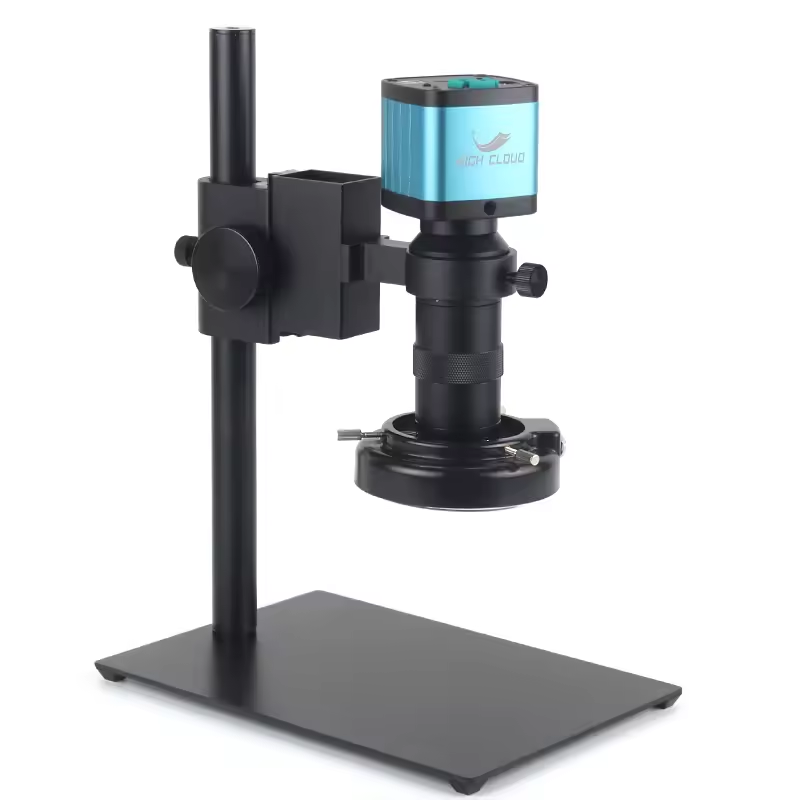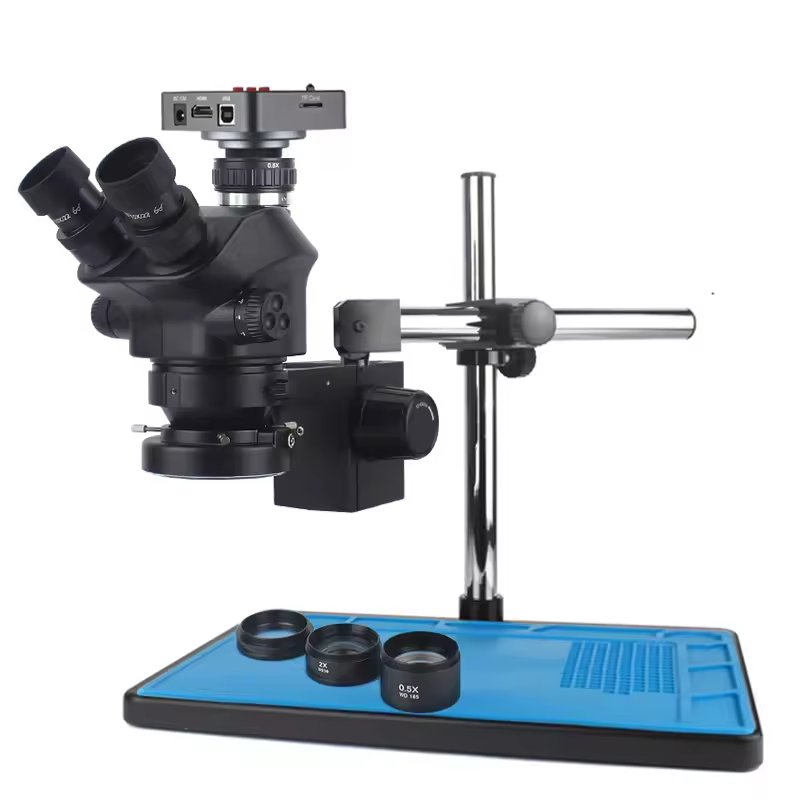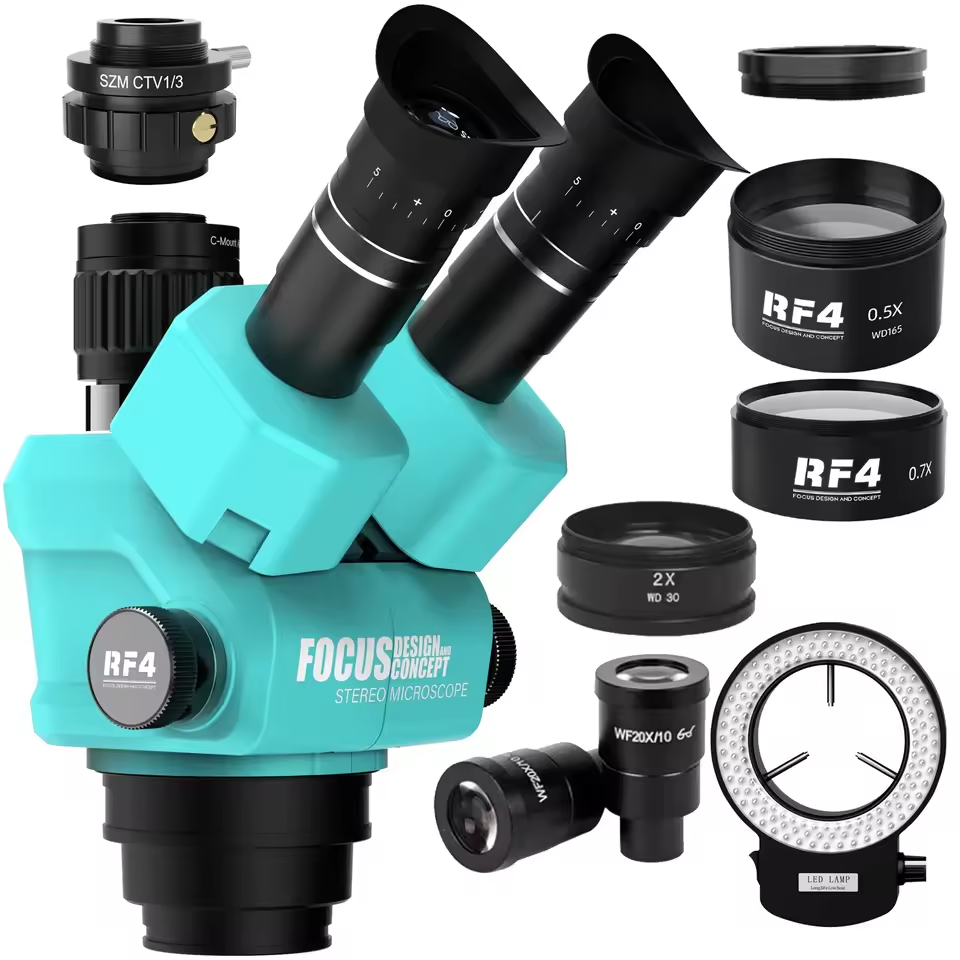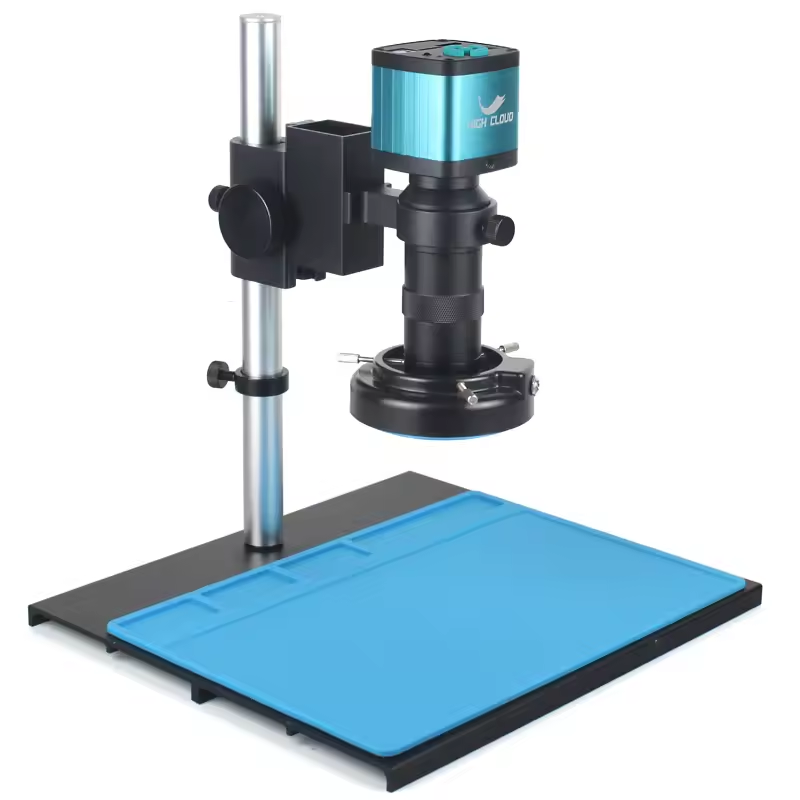Introduction to Pocket Microscopes
Imagine carrying a powerful microscope in your pocket. With a pocket microscope, this is now possible. Pocket microscopes are small, lightweight optical devices designed for magnification on the go. Their compact size makes them perfect for fieldwork, educational purposes, and everyday use by hobbyists and professionals alike.

Easy to use and transport, these tiny marvels bring the microscopic world into view anywhere, anytime. Whether you’re examining textiles, electronics, plants, or insects, a pocket microscope offers an up-close look at fine details. Their simplicity and convenience mark a leap forward from traditional, bulky microscopes.
Ideal for explorative learning, pocket microscopes encourage curiosity and discovery. They fit easily in a bag or even a large pocket, proving to be an invaluable tool for on-the-spot investigations. Use them to explore the tiny intricacies of the world around us. From students to scientists, the pocket microscope serves as a bridge to a fascinating microscopic universe.
Key Features to Look For in a Pocket Microscope
When shopping for a pocket microscope, it’s critical to focus on certain features. Here’s what to consider:
Magnification Power
One of the first things to check is the magnification power. It dictates how much the object will be enlarged. Look for pocket microscopes that offer at least 20x magnification. Higher power is better for more detailed observations.
Resolution
The resolution determines the clarity of the image you see. A higher resolution will reveal finer details. Choose a microscope that offers a balance of magnification and resolution.
Portability
Considering the purpose of a pocket microscope, it should be truly portable. It must be lightweight and small, without sacrificing quality. Check the dimensions and weight before making your choice.
Durability
Durability is important, especially if you’re using your microscope in the field. Look for sturdy construction and materials that can withstand regular use and transport.
Ease of Use
A pocket microscope should be simple to operate. Opt for models with straightforward focusing mechanisms. This makes them user-friendly, even for beginners.
Lighting
Good lighting is crucial for clear visibility. Some pocket microscopes come with built-in illumination, such as LED lights, which are helpful in low-light conditions.
Battery Life
If the microscope has lighting or other electronic features, battery life becomes a factor. Long battery life means less frequent charging or replacements.
By considering these key features, you can select a pocket microscope that fits your needs and ensures a satisfying viewing experience. Keep these in mind as you compare different models and brands.
How Pocket Microscopes Work
Understanding how pocket microscopes work is key to fully appreciating their value and functionality. These devices operate on the same basic principles as traditional microscopes but are simplified for compactness and ease of use.
Basic Components
At its core, a pocket microscope consists of a few essential components:
- Lens: The primary lens, or objective lens, magnifies the object you’re observing.
- Eyepiece: This is where you look through to see the magnified image produced by the lens.
- Focus Wheel: Used to adjust the clarity of the object, making fine details sharper.
- Light Source: Often an LED, it illuminates the object for better visibility.
The Magnification Process
When you place an object under a pocket microscope, the lens enlarges the image, which is then viewable through the eyepiece. The magnification power of the lens determines how much larger the image will appear. The distance between the lens and the object is optimized for significant enlargement within the instrument’s compact body.
Lighting and Clarity
Proper lighting is vital for a clear picture. Pocket microscopes markedly benefit from their built-in light sources. Some models even come with adjustable brightness settings. When you adjust the focus wheel, the lens moves closer or farther from the specimen, tweaking the focal length for the sharpest image.
Portability and Power
The small, lightweight design of pocket microscopes means they can be used almost anywhere. They often rely on batteries to power their illuminating features, with some models boasting long battery life for extended use. Easy-to-use focusing mechanisms are engineered for quick adjustments, making them accessible to users of all skill levels.
Understanding these mechanics helps users maximize the potential of their pocket microscope. Simplicity in design and function characterizes these miniature scientific tools, making them both incredibly practical and a joy to use.
Applications of Pocket Microscopes in Everyday Life
Pocket microscopes, with their versatile nature, don’t limit themselves to scientific labs. They extend their utility to various everyday situations. They prove particularly useful in environments where traditional microscopes can’t reach. Here, we explore some of the common applications of these compact tools in daily life.
Education and Learning
Educators and students alike find pocket microscopes handy for on-the-go learning. They offer a hands-on approach to studying biology, geology, and more. Classes benefit from immediate viewing of soil samples, plants, or insects during field trips.
Hobbyist Activities
Collectors of coins, stamps, or rocks use pocket microscopes to examine their finds. These tools help them spot fine details and verify authenticity. For artists working on miniatures, pocket microscopes provide a close-up look to perfect their craft.
Jewelry and Watch Repair
Jewelers and watchmakers rely on pocket microscopes to see small parts and make precise repairs. These devices help them work on intricate designs and ensure high-quality outcomes.
Textile Inspection
Quality control professionals in textiles employ pocket microscopes for inspecting fabric weaves. This aids in detecting defects or verifying thread counts, ensuring product consistency.
Electronics Diagnostics
Technicians use pocket microscopes to inspect circuit boards and other electronic components. They identify issues that are invisible to the naked eye, which is crucial in the tech repair industry.
Outdoor Exploration
Nature enthusiasts take pocket microscopes along on hikes or camping trips. They explore the micro-world, from plant cells to tiny organisms, enhancing their outdoor experience.
Professional Use
Scientists, researchers, and even crime scene investigators use pocket microscopes in the field. Their portability allows for quick analysis without returning samples to a lab.
Pocket microscopes unlock a world of fine details in everyday objects. Their practical applications range wide, from professional to personal use. Owning a pocket microscope is akin to having a scientific superpower in your pocket.
The Benefits of Having a Pocket Microscope
The pocket microscope is a handy tool with many advantages. Here are the top benefits described briefly:
- Instant magnification: With a pocket microscope, you can magnify objects whenever you wish. It’s ideal for impromptu observations.
- Portability: Its small size means you can take it anywhere. Convenience is key with a pocket microscope; it fits into nearly any bag or even a pocket, making it a constant companion for curiosity.
- Versatile use: Whether you’re a student, a jeweler, or a nature enthusiast, this tool adapts to various tasks. It serves numerous roles from education to intricate repair work.
- Easy operation: Pocket microscopes are designed for ease. Most people can learn to use one quickly, without special training.
- Affordable learning: Compared to traditional microscopes, pocket varieties are more affordable. This makes them accessible to a wider range of people and budgets.
- Enhanced learning: For visual learners, a pocket microscope can transform abstract concepts into tangible reality. This helps solidify understanding in scientific and educational contexts.
- Quality control: Professionals in various industries use pocket microscopes for quality checks. They ensure materials and components meet required standards.
- Battery efficiency: Long battery life in illuminated models allows for extended use. This saves time and energy, as you don’t need to charge or replace batteries too often.
Overall, owning a pocket microscope provides immediate access to the finer details of the world. It encourages constant learning, precise work, and the exploration of microcosms in daily life.
Popular Models and Brands of Pocket Microscopes
When exploring the market for pocket microscopes, you’ll encounter various models and brands. Each offers unique features and specifications that cater to different needs and preferences. To help guide your purchase, here are some popular models and brands that stand out in the world of pocket microscopy.
- Carson MicroBrite Plus: This model is known for its 60x-120x magnification power and built-in LED light. It’s a favorite among hobbyists for its portability and ease of use.
- Celestron Mini Handheld Digital Microscope: Offering a blend of traditional and digital, this device connects to a computer to display magnified images. Its magnification ranges from 1x to 150x, suitable for diverse applications.
- Jiusion Portable Magnification Endoscope: This pocket microscope boasts a digital connection to smartphones and computers. With magnification up to 1000x, it’s excellent for detailed observations.
- Koolertron Wireless Digital Microscope: A wireless model that enhances the user’s freedom to explore. It provides magnification up to 1000x and is compatible with various devices through WiFi.
- Plugable USB 2.0 Digital Microscope: It connects easily to computers via USB and offers up to 250x magnification, ideal for education and electronic diagnostics.
- Skybasic Digital Microscope: This model features an adjustable stand and up to 1000x magnification. It’s well-suited for users who require stability during examination.
While these are some of the popular choices, numerous other brands and models are available. When considering a purchase, ponder over the key features discussed earlier. Reflect on magnification power, resolution, portability, durability, ease of use, lighting, and battery life. Your specific needs will guide you towards the right pocket microscope. Remember, this tool is an investment in your passion for discovery and a gateway to the exquisite detail of the miniature world.
Tips for Using and Maintaining Your Pocket Microscope
To get the most out of your pocket microscope and ensure its longevity, proper use and maintenance are key. Here are some tips to help you use your pocket microscope effectively while keeping it in top condition:
Getting Started
- Read the manual: Familiarize yourself with your model’s specific functions and care instructions.
- Handle with care: Always hold your microscope by its body to avoid touching the lens or moving parts.
- Start with low magnification: Begin observing on the lowest setting, then gradually increase as needed.
Usage Tips
- Use ample lighting: Bright, direct light will enhance image clarity, so position your microscope accordingly.
- Adjust focus slowly: Turn the focus wheel gently for the sharpest image, avoiding forceful movements.
- Clean regularly: Wipe your microscope with a soft cloth to remove dust and fingerprints.
- Handle specimens properly: If using slides, ensure they are clean and free from scratches.
Maintenance
- Store it safely: Keep your microscope in its case or a dry, safe place when not in use.
- Check batteries: For illuminated models, check and replace batteries as needed to prevent leakages.
- Avoid harsh chemicals: Don’t use strong cleaners on any part of your microscope; they can damage lenses and casings.
- Inspect for damage: Periodically check for any wear or damage, especially after extensive use or travel.
By following these guidelines, your pocket microscope will provide reliable service and fascinating insights into the minute details of our world for years to come.
Where to Buy and What to Expect in Terms of Pricing
When it comes to purchasing a pocket microscope, there are multiple avenues you can explore. From online retailers to specialty scientific stores, the options vary in terms of convenience, price, and service. Here’s what to anticipate when looking to buy a pocket microscope and an idea of what you’ll likely need to spend.
Online Marketplaces
Online platforms such as Amazon, eBay, and Walmart are often the go-to places for a wide selection of pocket microscopes. They offer competitive prices and user reviews that help in making an informed decision. Expect prices to range from as low as $15 for basic models to over $100 for high-end devices.
Specialty Scientific and Educational Stores
Stores that specialize in scientific and educational supplies usually have knowledgeable staff to guide you through your purchase. They may offer high-quality microscopes at a slightly higher price point, owing to their specialized nature.
Electronics Stores
Some general electronics stores carry pocket microscopes among their gadgets. Prices here can be mid-range, and you may find decent quality models suitable for everyday use.
Price Expectations
Entry-level pocket microscopes can start at an accessible price, ideal for beginners or casual users. Mid-range models that offer greater magnification and additional features such as digital interfaces may cost a bit more. Premium pocket microscopes with superior optics and advanced features typically have the highest price tags.
In summary, pocket microscopes are available across various platforms, each with their own set of benefits. Online marketplaces provide convenience and variety, while specialty stores offer expert advice. Electronics stores might offer an intermediate option in terms of quality and cost. Pricing is varied, ensuring that whether you’re a hobbyist, a student, or a professional, there’s a pocket microscope to fit your budget and needs.



